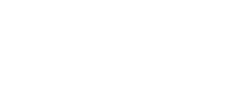UTILITY SYSTEM SAFETY
• Should be trained for proper packing, handling and storing of hazardous health care waste
• The need to wear protective gloves, shoes and aprons when handling waste containers
• Operation of on-site treatment and disposable methods such as single chamber furnace operation, encapsulation and safe burying
• Technicians and utility in charge of chemical disinfection should be trained to implement appropriate safety precautions and emergency measures and be informed about chemical hazards. Nurses and cleaning personnel should be aware of the occupational risk linked to handling sharps.
ELECTRICAL SAFETY
• The most important consideration for electrical safety in any hospital area is the power line and electrical grounding system
• All electrical design and installation must follow the implementing rules and regulation given by national electrical code and meet safety standards
• Inspect wiring of equipment before each use. Replace damaged of frayed electrical cords.
• Know the location and how to operate shut-off switches and /or CKT breakers panels
• Use safe work practices every time electrical equipment is used
• Limit the use of extension cord
• An electrical cords and wires have sufficient insulation to prevent direct contact
• Only equipment with 3 prong plugs should be used in Lab., OR, DR and ER. The third prong provides a path to ground for internal electrical short circuits thereby protecting the user from a potential electrical shock hazard. Circuit protection devices should be installed for automatically limit or shut off the flow of electricity in the event of ground fault, over load or short circuit in the wiring system
MECHANICAL SAFETY
• Be sure that all of the safety devices with which a machine is equipped are in the proper location and order before using the machine
• Safety goggles or face shield of an approved type should be worn at all times in shop or laboratory
• Avoid touching, moving parts of mechanical machinery
• When you approach someone who is operating the machine, wait until he has finished that particular operation or process before you attract his attention.
• If more than one person is assigned to work on a certain machine, only one person should operate the controls or switches
• Never leave a machine while it is running or in motion
• Request help from fellow worker when it is necessary to lift heavy machine accessory or heavy objects
• Know the operations principles, method of use and safety precautions of machines, tools and equipment before attempting to use them
MEDICAL EQUIPMENT SAFETY
• Planned preventive maintenance should be done for every electro-medical apparatus to make health care equipment available, clean and effective and safety for the use of patients and operators
• Electrical and mechanical safety tests are performed by qualified service personnel or technician on every piece of equipments to ensure safety
• All patient care equipment as well as clinical laboratory instruments, diagnostic imaging equipment and a variety of other devices used for medical purpose has passed for electrical safety procedures and international standards for safe current limits for electro medical devices.
• Perform corrective maintenance on a piece of equipment to restore it to its proper condition
• Ensure performance verification and calibration, verified that the equipment is fully operational and performing within reasonable and previously specified limits.


No comments:
Post a Comment